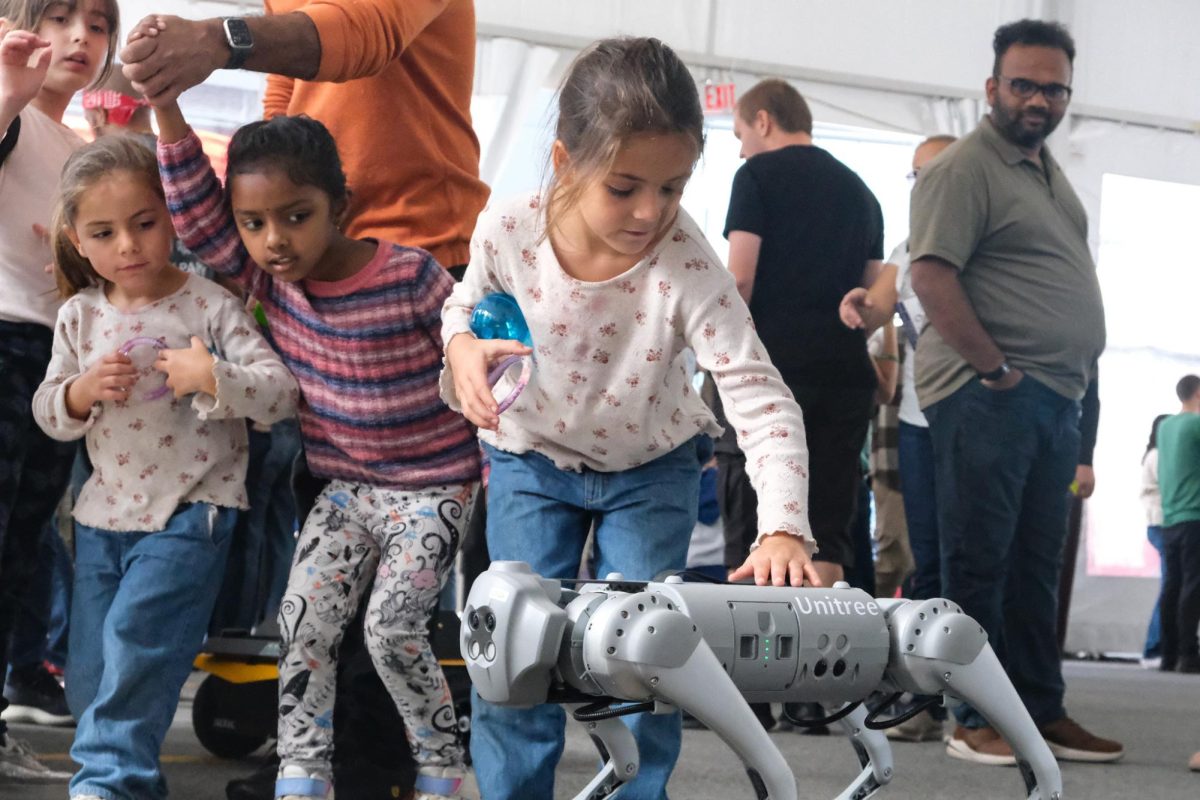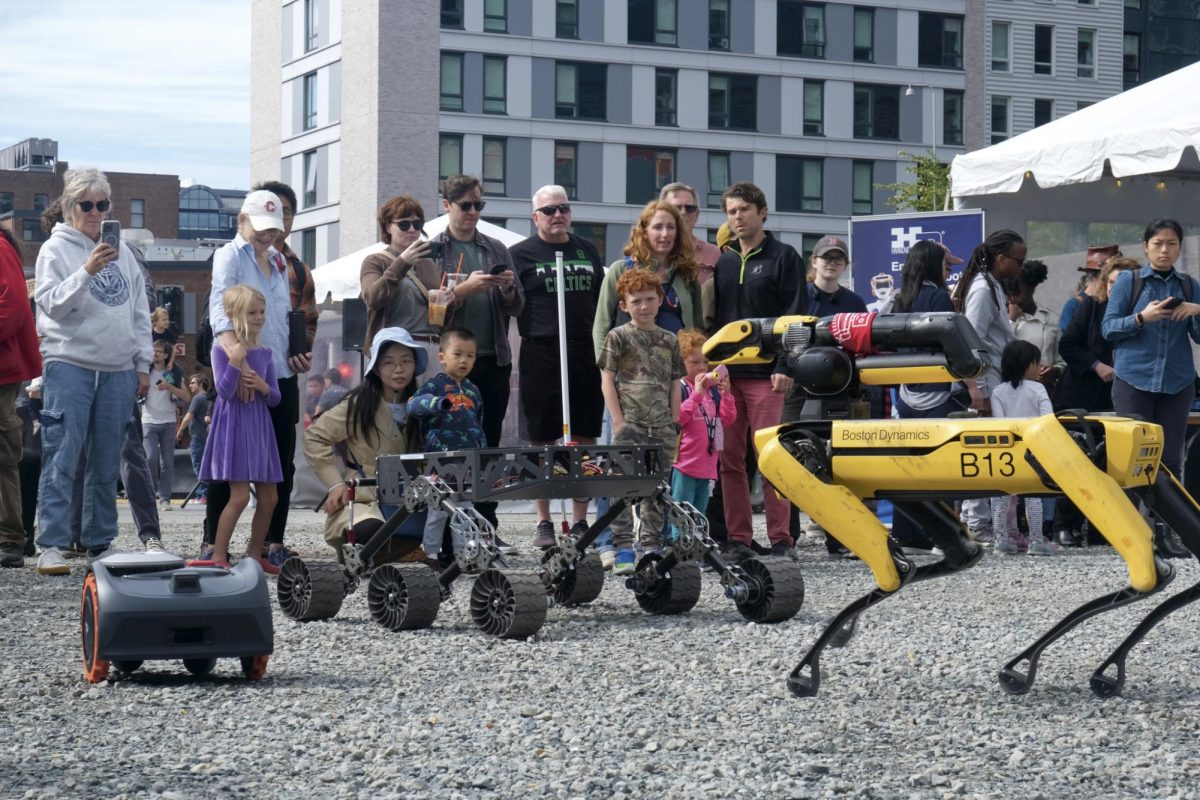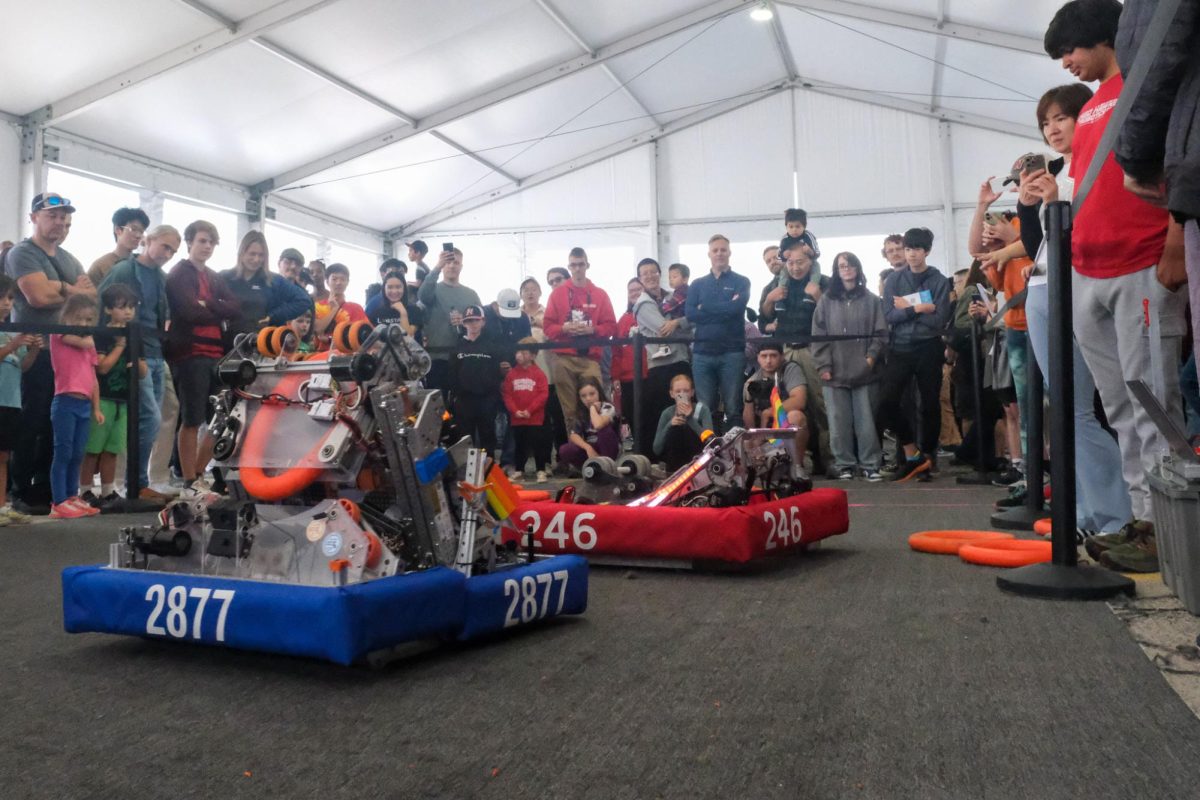The RoboBoston Robot Block Party, one of the largest robot and robotics displays in Boston, hosted over 40 exhibits and interactive demonstrations in Seaport Boulevard on Saturday drawing a crowd of everyone from high schoolers to industry attendees.
The party was organized by MassRobotics, a nonprofit innovation hub that provides resources and facilities for startups and collaborative initiatives with the industry and educational institutions.
Student teams and industry representatives opened the event with a second edition of the Robot Parade, walking for two blocks while remote-controlling robotics with various kinds of functions, from robot dogs and competitive bots to self-defense punching bags and solar panel installations, until the entrance of the venue.

Tom Ryden, the MassRobotics executive director, and Joyce Sidopoulos, the chief of operations, officially kickstarted the event with a ribbon-cutting ceremony.
“This is a chance for us to show what robots are all about to the folks here in the city of Boston,” Ryden said.
Sidopoulos says that robotics involves a wide range of skills, such as marketing and installation.
“I think Hollywood often paints a bad picture for robots, but really there are so many good things that robots can do for humanity,” she said. “So we want people to walk away and feel like [they] could do this.”
A battle arena was one of the newest additions to this year’s Robot Block Party, with 14 high school robotics teams from around the country participating in mock competitions throughout the day.
Eden Pytel, 13, is a member of Lazer Robotics, a FIRST Tech Challenge (FTC) robotics team from Countryside Elementary School in Newton, Massachusetts. She’s one of the youngest members in her team, who competed in their first FTC season this year.
“We’re extremely excited to be here, we love going out to opportunities like this,” Pytel said.
The FTC is a robotics program where students from grade 7–12 work in teams to build robots from scratch to compete in floor games, either on a regional or state level. High schoolers compete at a higher level program called FIRST Robotics Challenge (FRC).

Joshua Marcille, lead coach of Team 4909 at Billerica Memorial High School, says that the FRC program has advanced over the years.
“When I first was on the team, we were using flight control sticks, and now we have students that are using Xbox 360 controllers and high-definition cameras,” Marcille said.
Some stalls have also reported a growing interest in robotics education for children.
Lori Towle, executive director of Code & Circuit, a nonprofit computer and STEM education school for ages five to 13, says that their school started with a class of six students to over 4,000 students between their robotics, residence programs and classes alone.
According to Grand View Research, the educational robot market is estimated to be worth $1.38 billion in 2024, over a 16% increase from the year prior. North America also makes up the largest share of market revenue, making up 35.9% of revenue in 2023.
“What I really appreciate about this event is that there’s a really diverse population represented as far as age, as far as culture,” Towle said. “Being able to see kids get excited about robotics from a young age is very exciting because that technology is our future.”
However, recent industry trends could pose challenges for those wanting to go into robotics.
Sidopoulos says the hardware, prototyping, and testing process for start-ups are expensive despite seeing growing demand in the robotics industry.
“With any startup, there’s a lot of challenges and when you put hardware in the mix,” Sidopolulos said. “It’s even harder because as you build, you have to test, reiterate, build, test again, so it costs a lot more money.”

In 2023, investments in robotics were down to $10.6 billion, hitting a five year low globally, according to a report by global venture capital firm F-Prime Capital.
“Even if I’m a successful company and I have somebody who wants to buy 20 of my robots, you need the capital to be able to build those robots before you can sell them,” Sidopoulos said.
Still, artificial intelligence and the growing adoption of robotics in different industries have become a “big opportunity” for the robotics manufacturing industry, says Marc Mustard, head of communications of ASEA Brown Boveri (ABB) Robotics. The Swedish-based engineering company is a global industrial robotics supplier and manufacturer.
“Robots are here to help and they’re going to be here in the future,” Mustard said. “They’re going to do the dull, dirty, dangerous jobs that people don’t want to do and people shouldn’t be doing.”